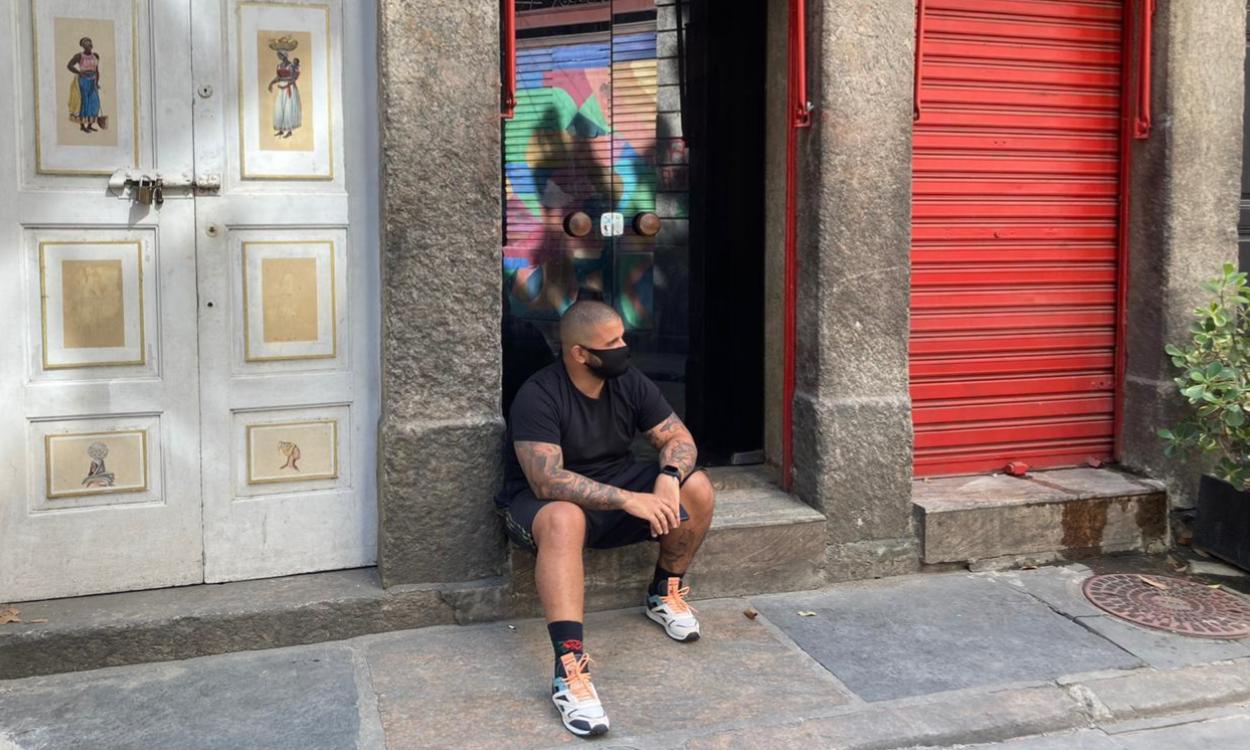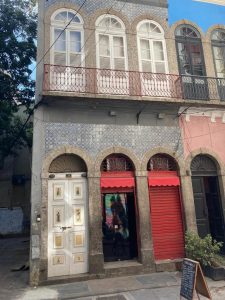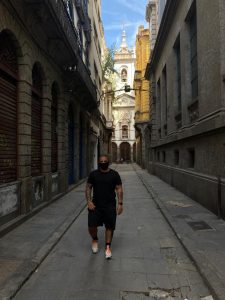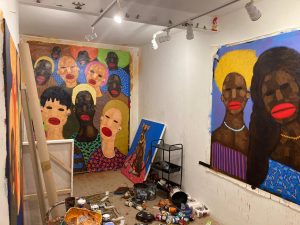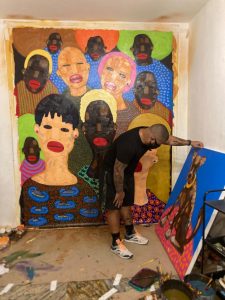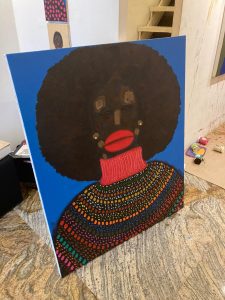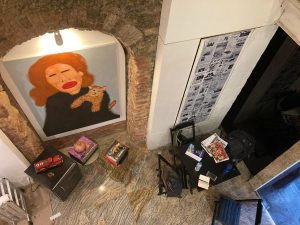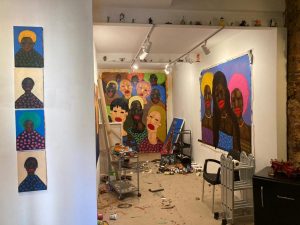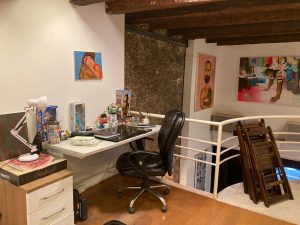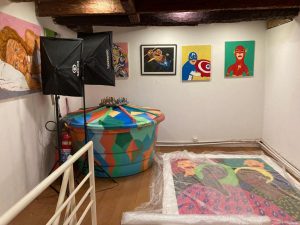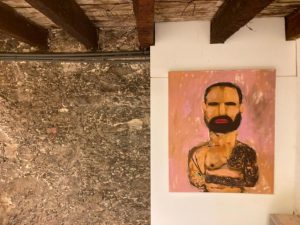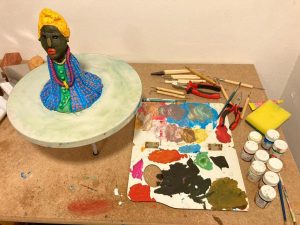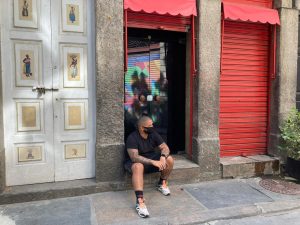Following a series of meetings with our represented artists in their art studios, this time we stopped by the old city center of Rio de Janeiro, more precisely at Rua do Rosário, where artist Rafael Baron occupies one of those typical two-storey houses with striking colonial features that embellish the historical downtown area.
Upon arrival, we are surprised by a narrow alley, whose atmosphere is clouded by a sober architecture, but which gradually opens up to some light, revealing at its opposite end a little blue sky and the facade of the charming Church of Nossa Senhora da Lapa dos Mercadores, on Rua do Ouvidor. When we walk through this part of the town – currently without the same hustle and bustle as we observe in pre-pandemic times – some disconnected emotions appear, a mixture of melancholy and dismay with a timid enchantment by the new perspectives and possibilities of observation that unfold around the empty and quieter streets.
Inside the studio, however, the feeling is more ordely, welcoming and enthusiastic – we are promptly abducted to the seductive universe of the characters imagined by the artist, who in very particular ways, involve anyone who sets out to “explore them”. Rafael Baron now lives a good part of his life in the studio, among brushes, paints and wood frames that have been giving shape to figures full of personality and expression, but also endowed with an instigating mystery. From his home in Nova Iguaçu to Rio’s downtown, the artist crosses the hustling Brasil Avenue on a daily route that lasts 1 hour on average. Whether in transit or in the creative shelter of the studio, Radio Cidade’s sturdy rock programming, which has just been stripped of its frequency on the dial to occupy exclusively a virtual platform, is the soundtrack that guides the artist in his creative routine.
His works are arranged on the ground floor and on the mezzanine of an environment that once existed as an art gallery; in this new configuration, my works, my rules. At the entrance, one of his paintings takes on a sublime look, as put in a sanctuary: “Jeanne e Modi”, one of the artist’s fave, has been strategically positioned, taking advantage of the building’s architecture. Other works fill a more working area, where the artist is currently immersed in the development of a new series of medium and large format paintings that should soon take place at the “The Cabin”, in Los Angeles (USA), an art space where he will exhibiting for the first time outside Brazil. At the top, a kind of timeline takes form, with works adjusted in a non-arbitrary way, but which indicate the evolution of his trajectory in figurative painting. There is also space for sculptural exercises, which point out new paths for the artist’s practice.
Check the gallery below for some pictures of this visit.
——–
Pictures gallery
——–
RAFAEL BARON was born in 1986 in Nova Iguaçu, RJ, Brazil, where he lives and works. He is graduated in Theology from FAECAD and in Photography and Studio Photography from SENAC – RJ. Studied Drawing (with Sérgio Dias), Painting (with Celso Mathias) and Art History (with Thiago Martins). He also attended several courses at Parque Lage School of Visual Arts – EAV, in Rio de Janeiro.
In his artistic practice, Baron develops studies and researches on figurative painting, with an eye to contemporary poetics. His work starts from the examination of the human figure, through which he discloses the subjectivities of the personality of each individual, looking for unique attributes in the process of creating his characters. In his paintings, abstract backgrounds, expressive brushstrokes and the use of vivid colors propel these figures forward, and they gain a certain unity, vigor and mystery with the black smudges of the eyes and the distinct red lips. In addition, when named by the artist, each figure seems to express its personality and suggest a story, instigating the observer’s imagination.In his research, he addresses issues related to social prejudice, racism, LGBT phobia, misogyny, among others. He sees art as a powerful communication tool that can contribute to a harmonious social experience. By proposing an open dialogue on tolerance and diversity, the artist invites the viewer to become a co-author of his creations.
He was awarded in the “Garimpo” contest (2019/2020), promoted by Dasartes magazine, an accolade aimed at Brazilian emerging artists who have never had an individual exhibition at an art institution. His works are already part of private collections in Brazil and abroad, and is also part of MAR – Museu de Arte do Rio institutional collection.
For more information, check the artist’s profile page here.
——–
Following all WHO protocols, this visit respected the social distancing and use of mask requirements.

